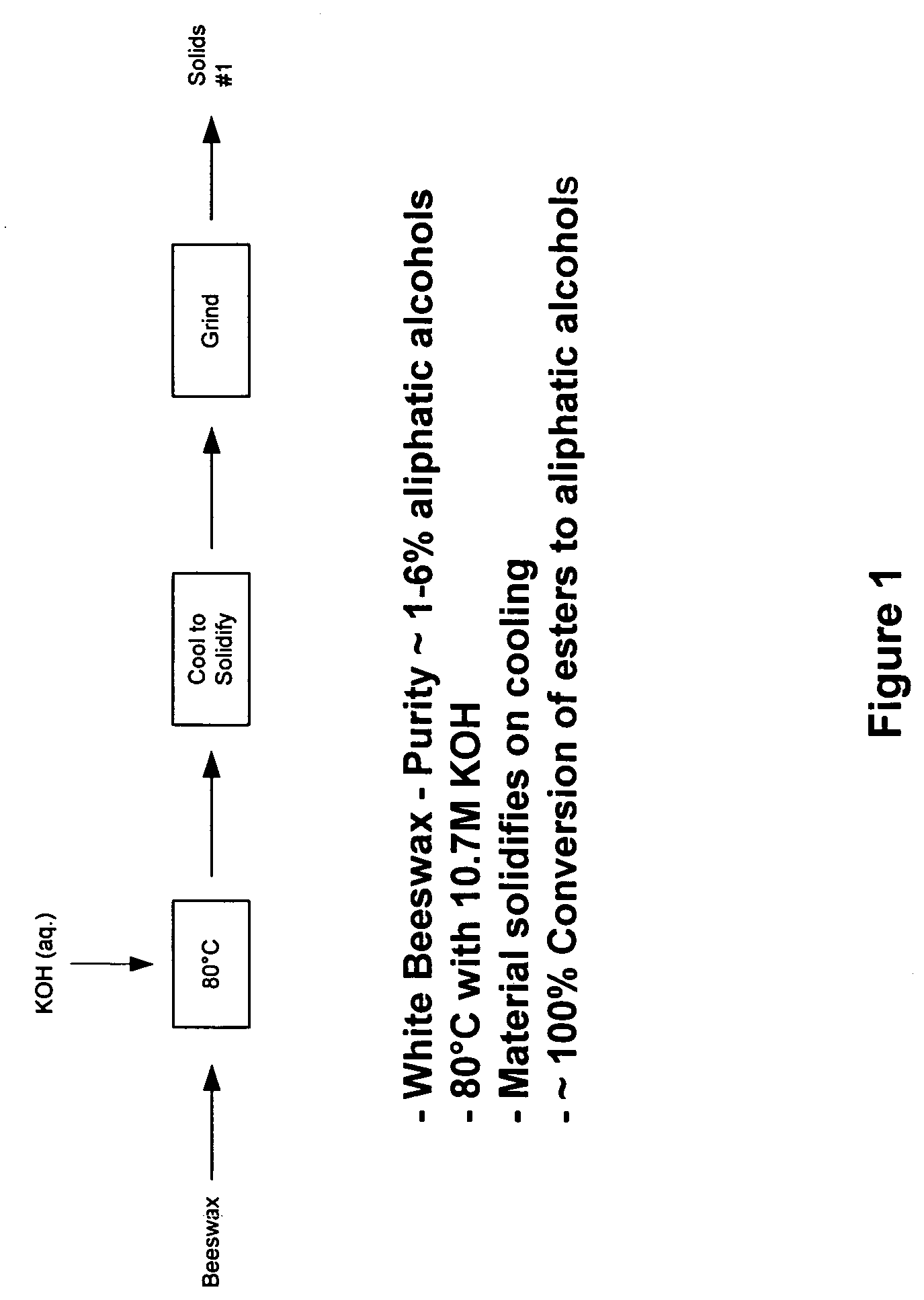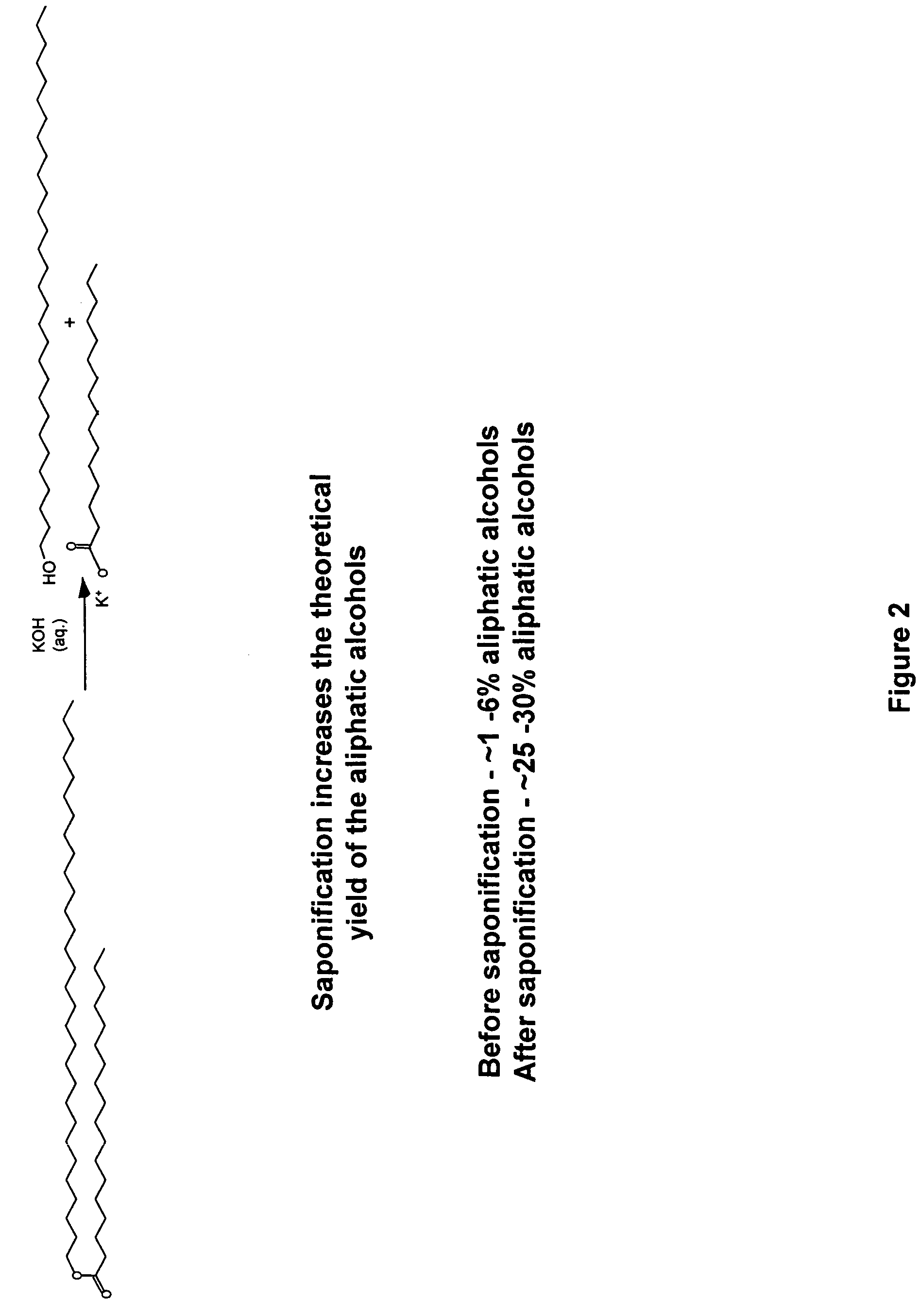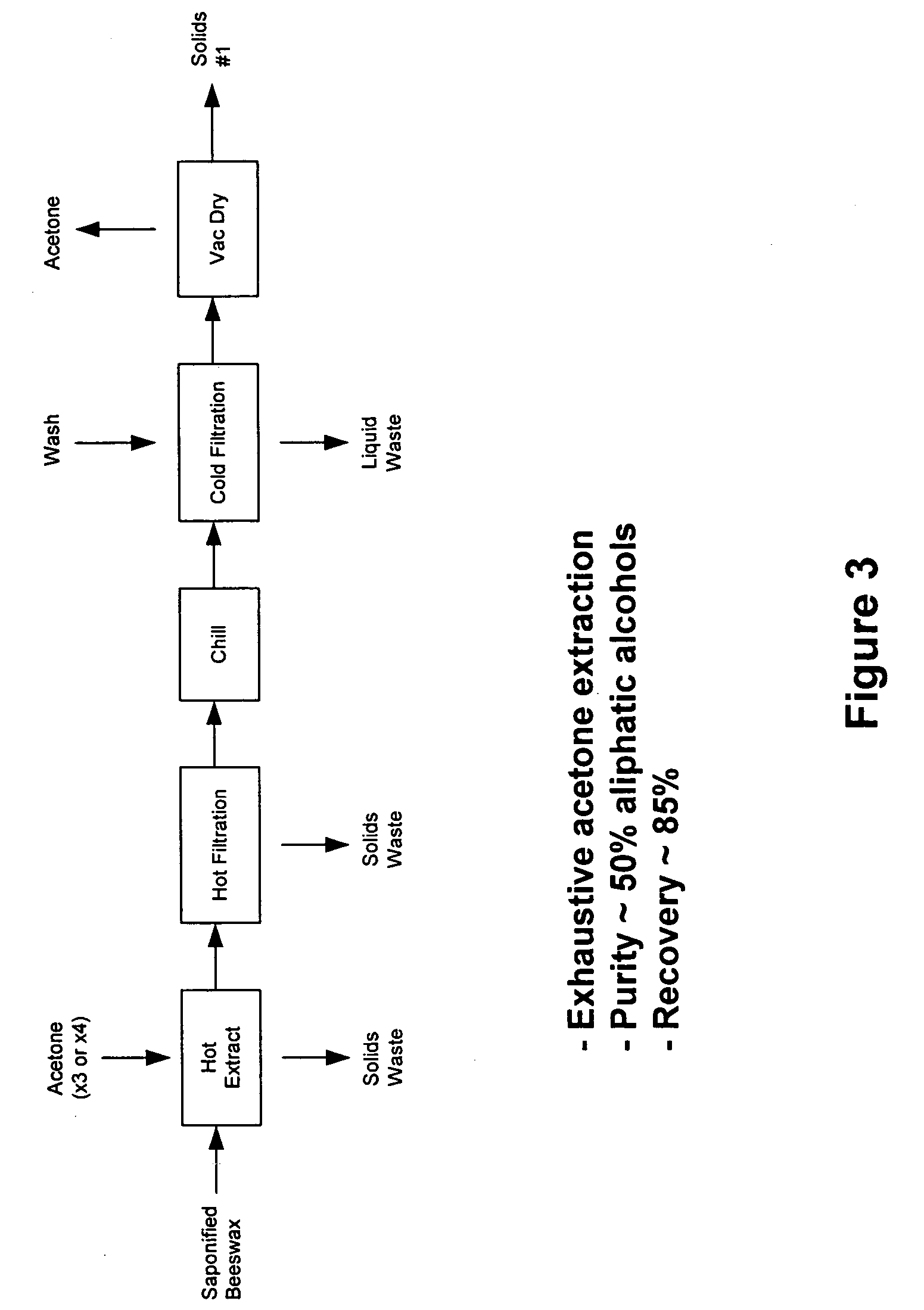High molecular weight primary aliphatic alcohols obtained from natural products and uses thereof
- Summary
- Abstract
- Description
- Claims
- Application Information
AI Technical Summary
Benefits of technology
Problems solved by technology
Method used
Image
Examples
example 1
Organic Solvent Extraction
[0061]Saponification: Seven kg of beeswax were heated using a water bath at 80° C.–85° C. for 2.5 hours until the wax was completely melted. Once the wax was completely melted, 1.22 L of 10.7 M KOH in water were added dropwise over 30 minutes while continuing the stirring and heating. The mixture was held at temperature for 3 hours with stirring. After 3 hours the saponified wax was poured into trays and dried in a 60° C.–65° C. vacuum oven. The 7.5 kg of cooled dried saponified wax were then ground to a powder.
Extraction:
[0062]The saponified solids were placed in a 72 L round bottom flask along with 45 L of acetone. The acetone was brought to reflux and held there for 3 hours. The heat was then removed and the solids allowed to settle. The extract was decanted through cheesecloth into 5-gallon buckets. An additional forty-five liters of fresh acetone were added to the solids in the round bottom flask and the extraction and decantation repeated to generate ...
example 2
Single Center Study
[0065]The final product described above in Example 1 was used in an open label, single center study to evaluate the effectiveness and tolerability of aliphatic alcohols at lowering LDL-cholesterol, increasing HDL-cholesterol, lowering total cholesterol, and improving LDL-cholesterol / HDL-cholesterol ratio, the results of which are summarized below, involving 14 subjects who took 10 mgs of aliphatic alcohols per day for 6 weeks. There were no controls on the subjects' diets. All data are reported in mg / dL.
[0066]
TABLE 1TOTAL CHOLESTEROLSUBJECTT1T2% ChgT3% Chg1218243 11%229 5%2200216 8%212 6%3170150−12%157 −8%4207155−25%171−17%5256217−15%221−14%6206196 −5%170−17%7314253−19%268−15%8176167 −5%171 3%9161164 2%159 −1%10 156167 7%173 11%11 240N.T.N / A220 −8%12 212185−13%184−13%13 260212−18%224−14%14 231208−10%241 4%Average215195 −9%200 −7%p*0.060.36T1 = Baseline (before taking aliphatic alcohols)T2 = 3 weeks of 10 mgs aliphatic alcohols per dayT3 = 6 weeks of 10 mgs aliphat...
example 3
[0078]The use of water extraction as an alternative to the first acetone extraction step of the aliphatic alcohol purification (as disclosed in Example 1 above) was evaluated below. Initial experiments had shown that extracting with water as a first step could provide a product of similar purity to that obtained by the typical first acetone extraction. This approach was pursued by tracking solids and aliphatic alcohol recoveries through the process and taking the first product through the heptane and acetone purification steps to demonstrate the ability of this approach to make a suitable product. The experiment and results are described below.
[0079]Saponification: Saponification was carried out as described previously.
[0080]First Extraction: Approximately, 100.3 g of saponified beeswax (31% purity; 31 g aliphatic alcohols) were placed in a 2 L round bottom flask along with 1 L water and 3 drops of Dow-Coming US1520 antifoam. The mixture was shaken vigorously for 3 m...
PUM
| Property | Measurement | Unit |
|---|---|---|
| Fraction | aaaaa | aaaaa |
| Fraction | aaaaa | aaaaa |
| Fraction | aaaaa | aaaaa |
Abstract
Description
Claims
Application Information
 Login to View More
Login to View More - R&D
- Intellectual Property
- Life Sciences
- Materials
- Tech Scout
- Unparalleled Data Quality
- Higher Quality Content
- 60% Fewer Hallucinations
Browse by: Latest US Patents, China's latest patents, Technical Efficacy Thesaurus, Application Domain, Technology Topic, Popular Technical Reports.
© 2025 PatSnap. All rights reserved.Legal|Privacy policy|Modern Slavery Act Transparency Statement|Sitemap|About US| Contact US: help@patsnap.com



